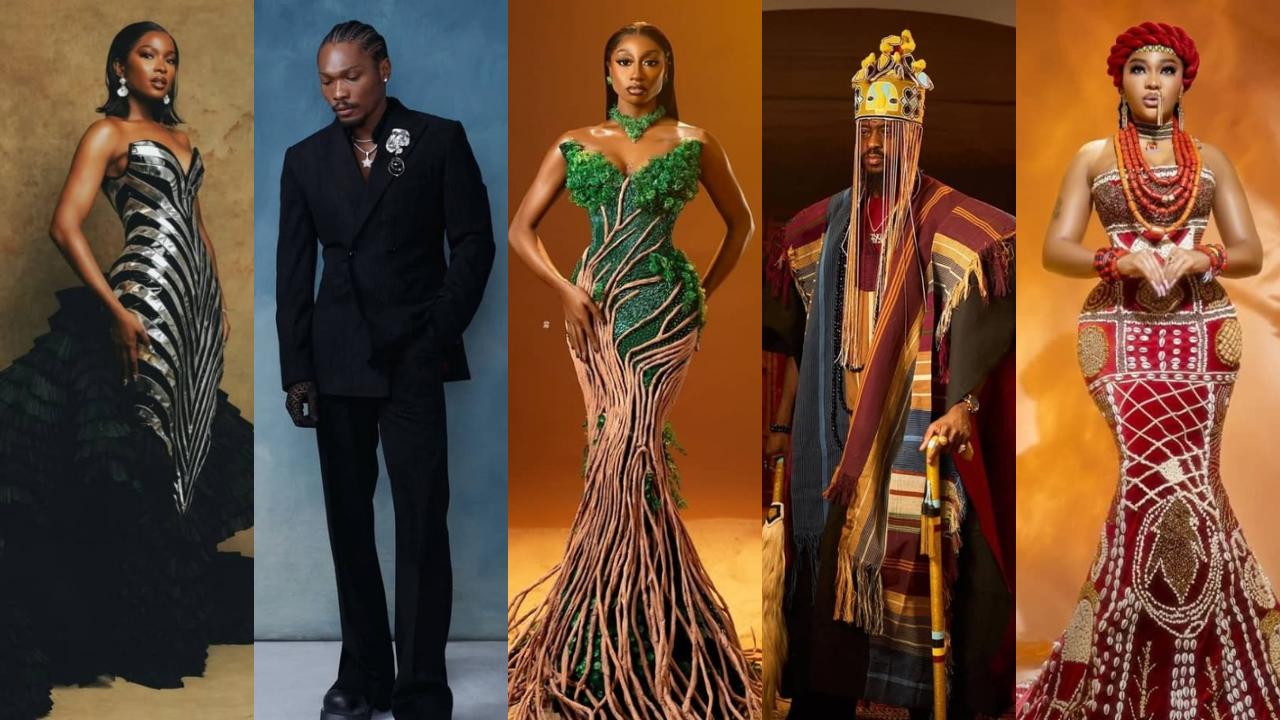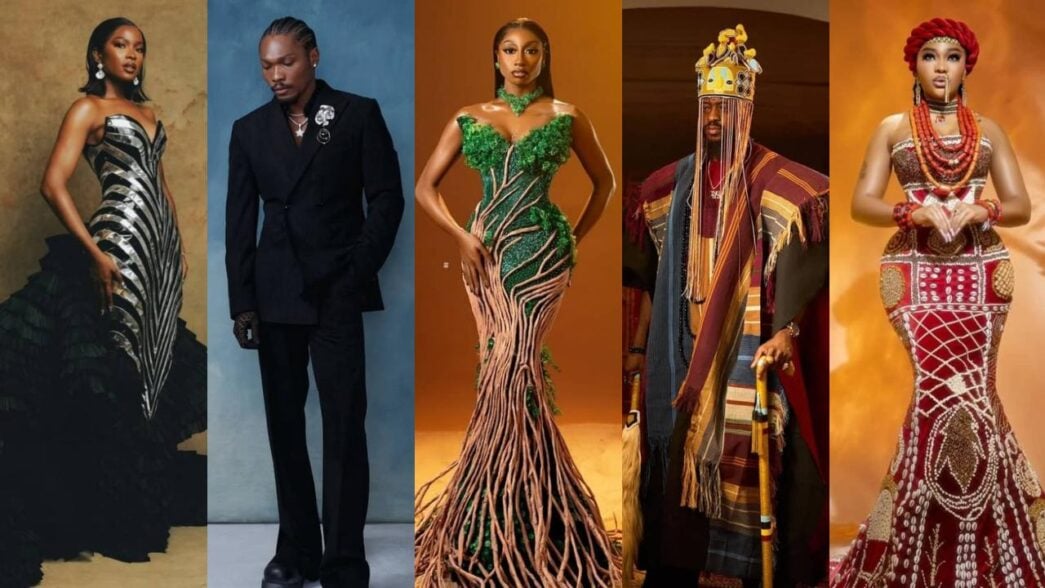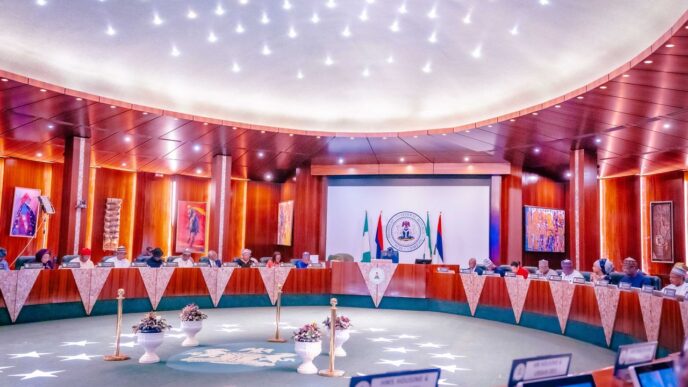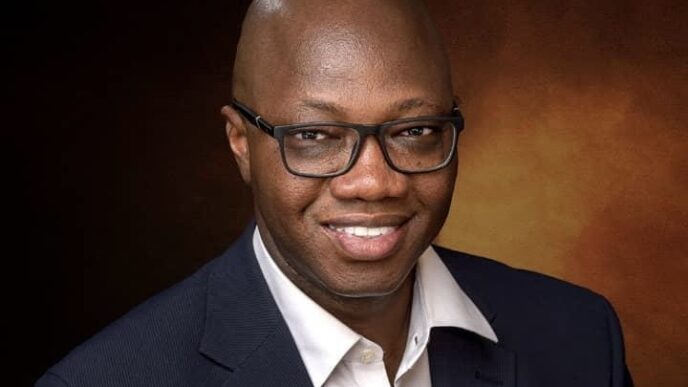BY TESSY OLISEH-AMAIZE
The AMVCAs have become a spectacle of fashion ambition, where red carpets shine with drama, culture, and couture-level creativity. Social media timelines light up. Hashtags trend. Celebrities pose in outfits inspired by galaxies, African royalty, folklore, and fantasy. And for a moment, it feels like Nigerian fashion is winning.
But what if this growth we’re celebrating is only happening on the surface?
What if the red carpet isn’t proof of progress, but a stage for a kind of performance that hides how fragile the fashion ecosystem still is, especially for the designers, tailors, and artisans behind the scenes?
Advertisement
Let’s be honest. Many of the elaborate outfits we saw at the AMVCAs this year—sculpted looks, extravagant shapes, and metallic drama—aim to mirror the spectacle of haute couture seen in global fashion capitals. The craftsmanship may not always match that standard, but the labour intensity often does. The difference? In places like Paris or Milan, such pieces are executed by established couture houses. With teams. With budgets. With fully staffed ateliers and enough time. In Nigeria, similar expectations are placed on small designers and struggling tailors—often working with little more than their bare hands, no production support, no PR agency, and no safety net.
They’re working overtime to deliver couture-level expectations for red carpet visibility, not real compensation.
This isn’t about one celebrity or one stylist. And it’s not about calling names. It’s about a recurring pattern I’ve observed over the years—a system where visibility is offered as currency, and the people doing the labour are rarely the ones empowered by the results.
Advertisement
What we’re seeing is not the rise of a strong fashion industry. It’s the rise of a performance-driven cycle where celebrities and stylists—sometimes unknowingly—extract hours of unpaid or underpaid labor from desperate designers eager to be seen.
Here’s how it usually works: a stylist or celebrity reaches out to a lesser-known designer days, weeks, or even months before a major event. They offer a vague promise of “exposure.” They ask for a dramatic look—something that will shut down the red carpet and trend on Instagram. Sometimes they offer a token payment. Often, the designer absorbs the cost of labour, fabric, and logistics—all for a photo they might not even be tagged in.
After the applause fades and the fashion blogs move on, you go to the designer’s page. No website. No updated catalogue. Just a single red carpet moment in the midst of less captivating looks.
Yes, there are rare cases where red carpet opportunities have opened doors. Some stylists and celebrities pay fairly and credit generously. But these are the exceptions—not the structure. And when progress is built on exceptions, it becomes a lottery, not an industry.
Advertisement
In the Nigerian fashion ecosystem, many talented designers operate without formal contracts, business teams, or consistent support. Yet they’re expected to produce the kind of showpieces that, elsewhere, require entire teams and six-figure budgets. And often, the cost of saying “no” is losing a chance at any form of recognition.
After 20 years in the fashion industry—from studying fashion in the United Kingdom to running a fashion house in Nigeria, and now continuing my journey in the United States—this feels like déjà vu. I’ve seen this cycle before: talented designers scrambling to create for a momentary spotlight, hoping that one viral look will change everything.
It rarely does. Exposure doesn’t pay bills. Hashtags don’t build brands. The truth is, visibility without structure, without systems, and without support will always collapse under its own weight.
There’s also the troubling disconnect between design and decoration that’s becoming more obvious with each red carpet cycle. Embellishments and arts-and-crafts aesthetics have begun to replace true craftsmanship, producing eye-catching costumes disguised as haute couture.
Advertisement
This isn’t about blame or pointing fingers. It’s about recognising who holds the spotlight and how they use it. Celebrities may not be designers, but they influence what the world sees. Visibility is powerful. But when it’s not matched with infrastructure and purpose, it becomes performance dressed up as progress.
If we’re serious about building an industry, not just an annual carnival, we need to do better. And as an industry veteran, I say this with love, not condemnation.
Advertisement
Celebrities must start compensating designers properly. Stylists must stop treating designers like last-minute vendors. Influencers must use their platforms to spotlight the brands behind their looks, not just their glam teams. And as designers, we must value our craft enough to stop giving it away in exchange for temporary hype.
True industry growth is not just about who wore what. It’s about whether the designer who made it is still in business after the event is over.
Advertisement
The AMVCAs have given us a glimpse of what’s possible: vision, ambition, and unapologetic storytelling through clothes. But until there are contracts, undisputed credits, real compensation, and infrastructure to support the creatives doing the labour, the Nigerian fashion boom will remain just that—a beautifully lit illusion, with no sustainable foundation underneath.
Tessy Oliseh-Amaize is an award-winning Nigerian designer and the creative director of Tesslo
Advertisement
Views expressed by contributors are strictly personal and not of TheCable.











